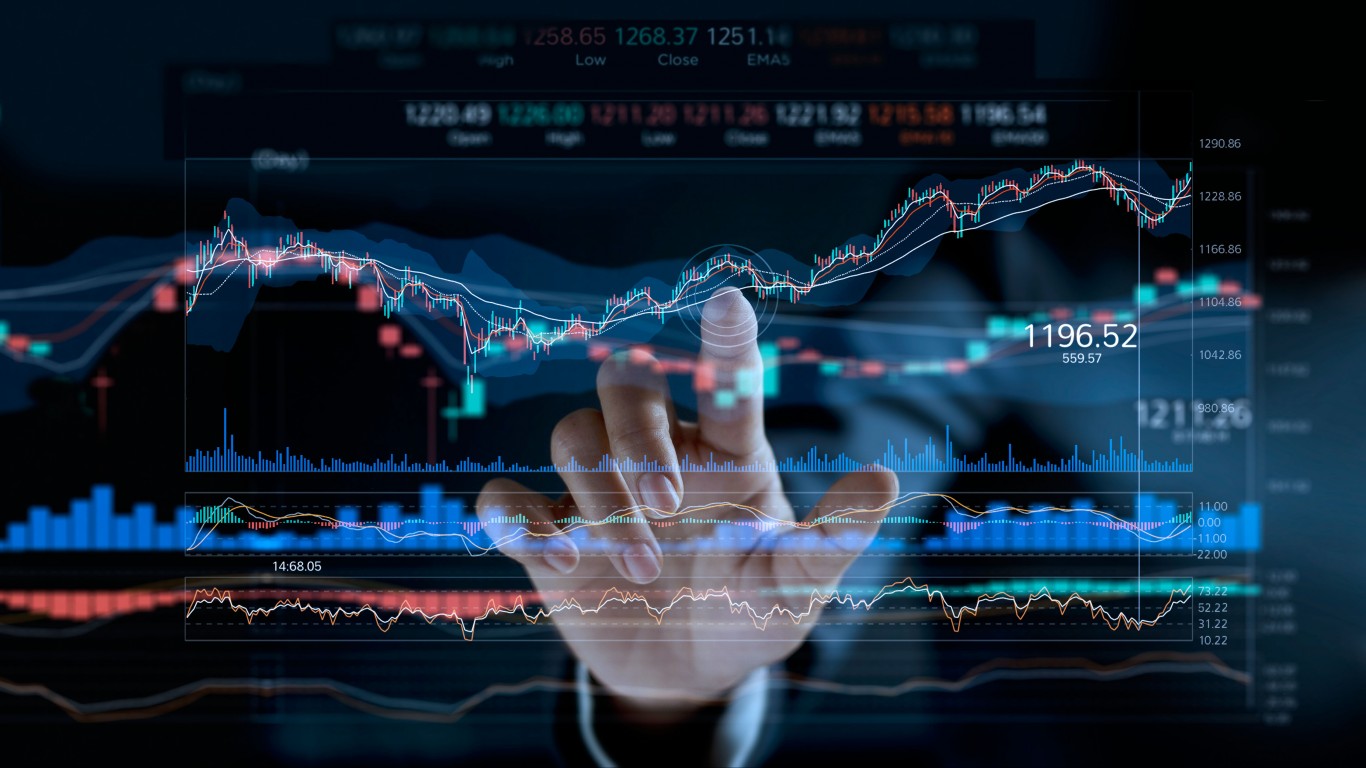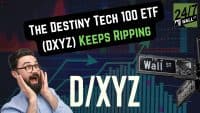
Wall Street lost its momentum at the start of August, with the three major bourses in red so far this month. The tech-heavy Nasdaq Composite has lost 4.4%, while the S&P 500 and Dow have slid 2.6% and 1.2%, respectively. Rounds of news have shaken investors confidence in the stock market.
Fed Hawkish Signal
The Fed, in its latest meeting, raised interest rates by a quarter-percentage point to 5.25-5.50%, the highest level since March 2001, marking the 11th rate increase. The central bank also signaled the possibility of further increases.
The Fed, in its statement, said, “recent indicators suggest that economic activity has been expanding at a moderate pace”. It added, “Job gains have been robust in recent months, and the unemployment rate has remained low. Inflation remains elevated.”
Although inflation has dropped from the peak of 9.1%, it has a long way to go to meet the Federal Reserve’s 2% target. The increase in interest rates has made borrowing expensive, pushed up the cost of buying a new car or house, increased the cost of carrying credit card debt and thus slowed down economic growth.
Fitch’s Credit Downgrade
Fitch Ratings downgraded the U.S. credit rating to AA+ from AAA, citing “expected fiscal deterioration over the next three years,” an erosion of governance and a growing general debt burden. This has led to a strong sell-off in the stocks and a surge in yields. Notably, Treasury yields spiked to the highs of 2023 last week. The 10-year yields topped 4.12%, marking the highest level since November 2022, while 30-year yields reached their highest level in nearly nine months to about 4.2%.
Banks Rating Cut
Ratings agency Moody’s downgraded the credit ratings of several small to mid-sized U.S. banks and warned that it may downgrade some of the nation’s biggest lenders too, citing a looming mild recession, higher interest rates and increased funding costs. The agency said that U.S. banks are contending with greater risks in managing their assets and liabilities.
The agency cut the ratings of 10 U.S. banks by one notch and placed some banking giants, including M&T Bank Corp., Webster Financial Corp., BOK Financial Corp., Old National Bancorp, Pinnacle Financial Partners Inc., and Fulton Financial Corp., on review for potential downgrades. Additionally, Moody’s changed its outlook to negative for 11 lenders, including PNC Financial Services Group, Capital One Financial Corp., Citizens Financial Group Inc., Fifth Third Bancorp, Regions Financial Corp., Ally Financial Inc., Bank OZK and Huntington Bancshares Inc.
The combination of factors has prompted investors to re-access their portfolios, leading to higher demand for lower-risk securities. As a result, we have highlighted five ETFs from different zones where investors could stash their money amid the current turbulence:
Low Volatility – iShares Edge MSCI Min Vol USA ETF (USMV)
Low-volatility ETFs have the potential to outpace the broader market in an uncertain market environment, providing significant protection to the portfolio. This is because these funds include more stable stocks that have experienced the least price movement in their portfolio. Further, these allocate more to the defensive sectors that usually have a higher distribution yield than the broader markets.
While there are several options, USMV, with AUM of $28.6 billion and an average daily volume of 2.3 million shares, is the most popular ETF. The fund charges 15 bps in annual fees and has a Zacks ETF Rank #3 (Hold) with a Medium risk outlook.
Quality – iShares Edge MSCI USA Quality Factor ETF (QUAL)
Quality stocks are rich in value characteristics with a healthy balance sheet, high return on capital, low volatility, elevated margins, and a track of stable or rising sales and earnings growth. These products thus reduce volatility when compared to plain vanilla funds and hold up rather well during market swings.
With AUM of $31.3 billion, this fund provides exposure to large and mid-cap stocks exhibiting positive fundamentals (high return on equity, stable year-over-year earnings growth and low financial leverage) by tracking the MSCI USA Sector Neutral Quality Index and holds 125 stocks in its basket. The ETF charges 15 bps in annual fees and trades in an average daily volume of 1.3 million shares.
Value – Vanguard Value ETF (VTV)
Value stocks have proven to be outperformers over the long term and are less susceptible to trending markets. These stocks have strong fundamentals — earnings, dividends, book value and cash flow — that trade below their intrinsic value and are undervalued. These have the potential to deliver higher returns and exhibit lower volatility compared with their growth and blend counterparts.
This fund targets the value segment of the broad U.S. stock market and follows the CRSP US Large Cap Value Index. It holds 343 stocks in its basket with AUM of $103.3 billion and charges 4 bps in annual fees. The ETF trades in volume of 2 million shares per day on average and has a Zacks ETF Rank #1 (Strong Buy) with a Medium risk outlook.
Defensive – Invesco Defensive Equity ETF (DEF)
The defensive sectors like healthcare, consumer staples and utilities generally act as a safe haven during political and economic turmoil. Stocks in these sectors generally provide higher returns in troubled times.
Invesco Defensive Equity ETF offers exposure to companies that are principally engaged in manufacturing, selling or distributing food and beverage products, agricultural products and products related to developing new food technologies. It has amassed $224.9 million in its asset base and saw a lower volume of 12,000 shares per day, on average. DEF charges 54 bps of fees per year and has a Zacks ETF Rank #3 with a Medium risk outlook.
Dividend – Vanguard Dividend Appreciation ETF (VIG)
The dividend-paying securities are the major sources of consistent income for investors, when returns from the equity market are at risk. This is especially true as these stocks offer the best of both these worlds — safety in the form of payouts and stability in the form of mature companies that are less volatile to large swings in stock prices. The companies that offer dividends generally act as a hedge against economic uncertainty and provide downside protection by offering outsized payouts or sizable yields on a regular basis.
While the dividend space has been crowded, ETFs with stocks having a strong history of dividend growth, like VIG, seem to be good picks. The ETF has AUM of $224.9 billion and trades in volume of 979,000 shares a day on average. It charges 6 bps in annual fees and has a Zacks ETF Rank #1 with a Medium risk outlook.
Vanguard Dividend Appreciation ETF (VIG): ETF Research Reports
Vanguard Value ETF (VTV): ETF Research Reports
iShares MSCI USA Quality Factor ETF (QUAL): ETF Research Reports
iShares MSCI USA Min Vol Factor ETF (USMV): ETF Research Reports
Invesco Defensive Equity ETF (DEF): ETF Research Reports
To read this article on Zacks.com click here.
This article originally appeared on Zacks
Take This Retirement Quiz To Get Matched With An Advisor Now (Sponsored)
Are you ready for retirement? Planning for retirement can be overwhelming, that’s why it could be a good idea to speak to a fiduciary financial advisor about your goals today.
Start by taking this retirement quiz right here from SmartAsset that will match you with up to 3 financial advisors that serve your area and beyond in 5 minutes. Smart Asset is now matching over 50,000 people a month.
Click here now to get started.
Thank you for reading! Have some feedback for us?
Contact the 24/7 Wall St. editorial team.



